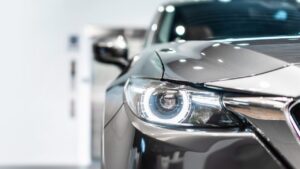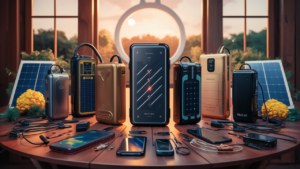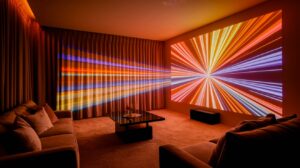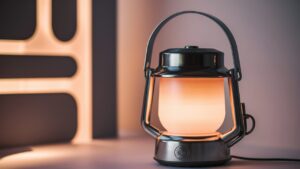Yes, LED headlight bulbs do last longer than traditional bulbs. They offer many advantages, including durability and energy efficiency.
But what makes them so long-lasting? Many car owners are now switching to LED headlights. These bulbs promise brighter light and a longer lifespan. But what is the truth behind these claims? Are they worth the investment? In this post, we will explore the lifespan of LED headlight bulbs.
We will also discuss how they compare to other types of bulbs. By the end, you will know if LED headlights are the best choice for your vehicle. Let’s dive into the details.
Introduction To Led Headlight Bulbs
LED headlight bulbs are known for their longevity. They last much longer than traditional halogen bulbs. This means fewer replacements and more reliable performance over time.
LED headlight bulbs have become a popular choice for many drivers. They promise better performance and longer lifespan. But what makes them different from traditional bulbs?What Are Led Headlight Bulbs?
LED stands for Light Emitting Diode. These bulbs use semiconductor technology to produce light. Unlike traditional bulbs, LEDs do not have a filament. This makes them more durable and energy-efficient.Popularity Of Led Headlights
LED headlights are gaining popularity fast. Many car manufacturers now include them as standard. Drivers prefer LEDs for their bright and clear light. This improves visibility on the road, especially at night. LEDs also consume less power. This means less strain on your car’s battery. They are also more environmentally friendly. Their long lifespan reduces the need for frequent replacements. This saves money and reduces waste. Overall, LED headlight bulbs offer many benefits. It’s easy to see why they are becoming the go-to choice for many drivers. “`Longevity Of Led Headlights
LED headlights have become popular in recent years. They are bright and energy-efficient. But do they really last longer than traditional bulbs? Let’s explore the longevity of LED headlights.
Typical Lifespan
LED headlights usually have a long lifespan. Most LEDs can last between 20,000 to 30,000 hours. That’s many times longer than halogen or HID bulbs. This means fewer replacements and less hassle over time.
Factors Affecting Longevity
Several factors can impact the lifespan of LED headlights. One key factor is heat. LEDs generate less heat than other bulbs. But they still need good cooling systems. Without proper cooling, their lifespan can shorten.
Another factor is the quality of the LED bulb. Higher-quality bulbs tend to last longer. Cheap LEDs might fail sooner. Voltage fluctuations can also affect LED lifespan. Stable power supply helps LEDs last longer.
Usage patterns play a role too. Frequent switching on and off can reduce lifespan. Constant use at high brightness levels might also wear them out faster.
Comparing Led To Halogen And Hid
LED headlight bulbs last longer compared to halogen and HID bulbs. They offer better efficiency and durability. You’ll enjoy a brighter, more reliable light source for years.
Hey friends, today we’re diving into a question many car owners ask: Do LED headlight bulbs really last longer? We’ll compare LED headlights to two common types: Halogen and HID. Let’s break it down step by step.Lifespan Comparison
First, let’s talk about how long these bulbs last. – LED Bulbs: Generally, LED headlights last between 20,000 to 30,000 hours. That’s a lot of nights of driving! – Halogen Bulbs: These are the most common and cheapest. But they only last about 500 to 1,000 hours. Quite a difference, right? – HID Bulbs: High-Intensity Discharge lights are a bit better. They can last around 2,000 to 5,000 hours. Not bad, but still not as good as LEDs. So, why do LEDs last longer? LEDs don’t have a filament that can burn out. They use a semiconductor to produce light, which is much more durable. In simple terms, they’re built to last.Performance Differences
Next, let’s talk about how these bulbs perform. – Brightness: LEDs are incredibly bright. They can light up the road much better than Halogen and even HID lights. If you drive a lot at night, this can be a game-changer. – Energy Efficiency: LEDs use less power. This means less strain on your car’s battery and alternator. Halogen bulbs, on the other hand, consume more energy. – Color Temperature: LEDs can produce a whiter, more natural light. Halogen bulbs give off a yellowish light, while HIDs are often bluish. Here’s a quick table to compare:| Feature | LED | Halogen | HID |
|---|---|---|---|
| Lifespan (hours) | 20,000 – 30,000 | 500 – 1,000 | 2,000 – 5,000 |
| Brightness | Very Bright | Moderate | Bright |
| Energy Efficiency | High | Low | Medium |
| Color Temperature | White | Yellow | Blue |
Energy Efficiency Of Led Headlights
LED headlights are often praised for their energy efficiency. But what does that mean? Simply put, they consume less power than traditional bulbs. This results in a range of benefits for your vehicle and your wallet.
Power Consumption
LED headlights use significantly less power than halogen bulbs. Halogen bulbs consume up to 55 watts each. In contrast, LED bulbs typically use only 15-45 watts. This reduction in power consumption is a key reason why LED headlights are more efficient.
Lower power consumption means less strain on your vehicle’s electrical system. It also translates to lower fuel consumption, saving you money in the long run. Plus, with less energy used, the lifespan of LED headlights increases. This makes them a cost-effective choice.
Impact On Vehicle Battery
LED headlights put less demand on your vehicle’s battery. Traditional halogen bulbs can drain the battery faster, especially if used frequently. LED bulbs, with their lower power requirements, help preserve the battery life.
This is particularly beneficial in colder climates. Cold weather can already stress your vehicle’s battery. Using LED headlights can reduce that strain, ensuring your vehicle starts reliably. The energy efficiency of LED headlights contributes to overall vehicle longevity. Less battery wear means fewer replacements and less maintenance cost.
Durability And Reliability
When it comes to choosing headlight bulbs, you want something that lasts. You don’t want to keep changing them every few months. So, do LED headlight bulbs really last longer? Let’s dive into their durability and reliability.
Resistance To Vibrations
One of the key benefits of LED headlight bulbs is their resistance to vibrations. Think about all the bumps and potholes you hit while driving. Traditional bulbs, like halogens, can easily get damaged by these vibrations. But not LEDs.
Why? Because LEDs are solid-state lights. This means they don’t have fragile filaments that can break. So, they can handle rough rides much better. It’s like comparing a rubber ball to a glass ornament. Which one would you rather drop?
Weather And Temperature Resilience
Another important factor is how well these bulbs perform in different weather conditions. We all know weather can be unpredictable. One day it’s sunny, the next it’s raining cats and dogs. LED headlight bulbs are designed to handle these changes.
How? Let’s break it down:
- Heat: LEDs produce less heat compared to traditional bulbs. This means they’re less likely to overheat and fail.
- Cold: Unlike some bulbs, LEDs perform well even in freezing temperatures. They turn on instantly without any flickering.
- Moisture: LED bulbs are often sealed in watertight casings, making them resistant to moisture and condensation.
Think about it. Whether you’re driving through a desert or a snowstorm, your LED headlights will keep shining bright.
From my own experience, I switched to LED headlights last year. I often drive on rough country roads, and my old halogen bulbs used to fail frequently. Since switching to LEDs, I haven’t had to replace them once. It’s a small change, but it has made a big difference.
In summary, LED headlight bulbs are built to last. They handle vibrations, extreme temperatures, and moisture much better than traditional bulbs. If you’re tired of constantly changing your headlight bulbs, LEDs might just be what you need.
Cost Vs. Longevity
LED headlight bulbs have become popular. Many drivers wonder about their cost and longevity. Is the investment worth it? Let’s break it down.
Initial Investment
LED headlight bulbs often cost more upfront. They are pricier than halogen bulbs. This initial cost can be a concern. But, there’s more to consider.
Long-term Savings
LED bulbs last longer than halogen ones. They can last up to 30,000 hours. This means fewer replacements. Fewer replacements mean less money spent in the long run.
Additionally, LED bulbs use less energy. This can reduce strain on your car’s battery. A healthier battery can lead to fewer issues and repairs.
Maintenance And Replacement
Hey friends, today we’re going to dive into the world of LED headlight bulbs. You might be wondering, do these bulbs really last longer? Well, let’s talk about their maintenance and replacement. Knowing how to take care of your LED headlights can make a huge difference. Let’s get started!
Ease Of Replacement
One of the best things about LED headlight bulbs is how easy they are to replace. You don’t need to be a car expert to do it. Here’s a simple step-by-step guide:
- First, make sure your car is off. Safety first!
- Open the hood and find the back of the headlight assembly.
- Twist the old bulb and pull it out.
- Insert the new LED bulb and twist it to secure.
- Close the hood and check the lights.
See? Easy peasy. It’s almost like changing a light bulb at home.
Maintenance Tips
Now, let’s talk about maintaining those LED bulbs. Proper maintenance can help them last even longer. Here are some simple tips:
- Keep them clean: Dust and dirt can reduce light output. Wipe them down with a soft cloth.
- Check connections: Make sure the bulbs are tightly connected. Loose connections can cause flickering.
- Avoid moisture: Water can damage the bulbs. Ensure the headlight assembly is sealed properly.
- Regular inspections: Take a quick look at your headlights every few weeks. Catching problems early can save you time and money.
Think of it like brushing your teeth. A little care goes a long way. I recently checked my own car’s LED headlights and found a loose connection. A quick fix and they were good as new!
So, do LED headlight bulbs really last longer? With easy replacement and simple maintenance, they sure can. Take care of them, and they’ll take care of you. Happy driving!
User Experiences And Reviews
When it comes to LED headlight bulbs, user experiences can be quite telling. Many car enthusiasts and everyday drivers have shared their thoughts on these modern lights. So, what do people really think? Are LED headlight bulbs worth the investment? Let’s dive into some real user feedback.
Positive Feedback
Many users rave about the benefits of LED headlight bulbs. Here are some highlights from their experiences:
- Brightness: Users often mention that LED headlights are much brighter than traditional halogen bulbs. This makes nighttime driving safer and more comfortable.
- Longevity: A lot of drivers are impressed with how long LED bulbs last. Some report using the same bulbs for several years without any issues.
- Energy Efficiency: LED bulbs consume less power. This means less strain on your car’s battery.
- Quick Installation: Many find that installing LED headlight bulbs is simple and quick. No need for a mechanic.
For example, John from Texas shared, “I switched to LED headlights last year. They are super bright and have lasted much longer than any other bulb I’ve used.”
Common Complaints
Of course, not all feedback is positive. There are a few common complaints about LED headlight bulbs that potential buyers should be aware of:
- Cost: Some users find LED bulbs more expensive compared to halogen bulbs. The initial investment can be high.
- Compatibility: A few drivers have trouble finding LED bulbs that fit their car models perfectly. This can lead to frustration and extra costs.
- Heat Issues: Although rare, some users report that certain LED bulbs can generate excessive heat. This can potentially damage the headlight housing.
- Beam Pattern: Not all LED bulbs produce a focused beam. Some drivers complain about scattered light, which can be distracting.
For instance, Sarah from California mentioned, “I had to return my first set of LED bulbs because they didn’t fit properly. It was a hassle, but once I found the right size, they worked great.”
In conclusion, user experiences with LED headlight bulbs are generally positive, but there are a few pitfalls to watch out for. By considering both the pros and cons, you can make an informed decision on whether LED headlights are right for you.
Future Of Automotive Lighting
LED headlight bulbs often outlast traditional halogen bulbs. Their long lifespan reduces the need for frequent replacements, making them a cost-effective choice. Enhanced durability and efficiency make LED headlights a popular option for modern vehicles.
The future of automotive lighting is bright, literally. With advancements in technology, cars are evolving, and so are their lights. LED headlight bulbs are leading this change. They promise better visibility, energy efficiency, and a longer lifespan. But do they really last longer? Let’s dive into the latest trends and innovations shaping the future of car lights.Technological Advancements
Modern cars are like mini-computers on wheels. So, it’s no surprise that headlights are getting smarter too. Here are some key advancements: – LED Technology: LED stands for Light Emitting Diode. These bulbs are more efficient than traditional halogen lights. They use less power and produce a brighter light. – Adaptive Headlights: These lights adjust their brightness based on the driving conditions. For example, they dim when another car approaches, reducing glare. – Laser Lights: This is the cutting-edge of car lighting. Laser lights are incredibly bright and can illuminate a much larger area. They are also very energy-efficient. These advancements mean that LED headlights not only last longer but also improve safety.Market Trends
So, what’s happening in the market? Are people really switching to LED headlights? The short answer is yes. Here are some trends: – Increasing Adoption: More car manufacturers are offering LED headlights as standard or optional features. It’s becoming the new norm. – Cost-Effectiveness: Initially, LED headlights were expensive. But as technology improves, the cost is coming down. This makes them more accessible to everyone. – Consumer Demand: People want better visibility and longer-lasting lights. LED headlights meet these demands. They are also more eco-friendly, which is a big plus for many buyers. I recently upgraded my car’s headlights to LEDs. The difference was night and day. Literally. The road seemed clearer, and I felt safer driving at night. In conclusion, the future of automotive lighting is exciting. With continuous advancements and growing market trends, LED headlights are here to stay. They offer numerous benefits, including longevity, which makes them a smart choice for any driver. “`Frequently Asked Questions
What Are The Downsides Of Led Headlights?
LED headlights can be expensive. They may cause glare for other drivers. Limited compatibility with older vehicles. Potential overheating issues.
What Is The Life Expectancy Of A Led Headlight?
LED headlights typically last between 30,000 to 50,000 hours. This lifespan is much longer than halogen bulbs.
Do Led Headlights Last Longer Than Regular Headlights?
Yes, LED headlights last longer than regular headlights. They typically last up to 25,000 hours, compared to 1,000 hours for halogen bulbs.
Why Do Led Bulbs Fail So Quickly?
LED bulbs fail quickly due to poor quality components, heat buildup, and improper installation. High temperatures and voltage fluctuations shorten their lifespan.
Conclusion
LED headlight bulbs offer longer life than traditional bulbs. They save money on replacements. LEDs also provide better visibility at night. Their energy efficiency helps reduce car battery strain. Many drivers find them a great investment. Consider switching to LED headlights for lasting benefits.
They are an excellent choice for safety and cost-effectiveness. Overall, LED headlight bulbs seem to be a smart option for most drivers. Enjoy brighter, longer-lasting lights on the road.








